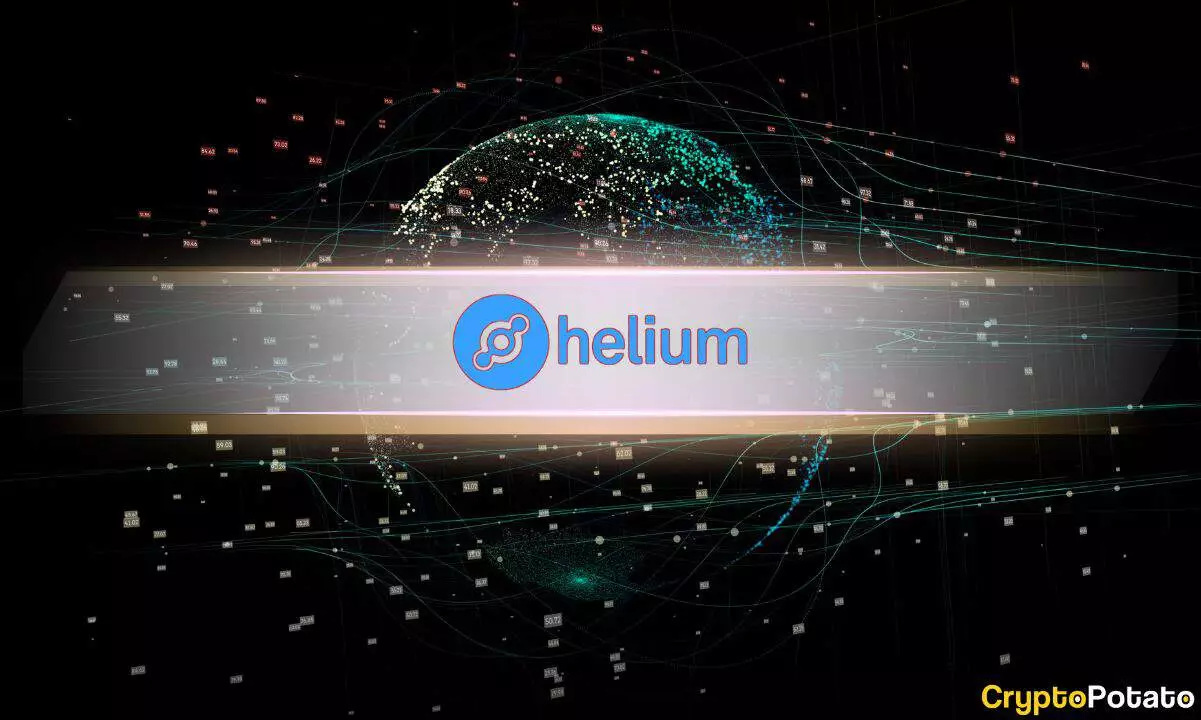In a stark reminder of the volatility of cryptocurrency, Helium’s native token HNT has taken a significant beating, plummeting by 22% during the last quarter of 2023. Its market capitalization shrunk from $1.3 billion to a meager $1.0 billion, casting shadows over the optimism that once surrounded the network. While the blockchain-driven telecommunications venture showed considerable progress in its infrastructure, this financial reality check raises essential questions about sustainability and the responsible management of resources in an industry marred by speculation and rapid fluctuations in fortunes.
Despite the disheartening price drop, the Helium network is marching forward with surprising vigor. The growth of Helium Mobile has been impressive on paper, as it added 3,000 new hotspots to reach a total of 24,800—an impressive 14% increase. While this showcases a robust commitment to expansion, one has to wonder whether such growth aligns with the actual demand for their services, or is merely an inflated symptom of hype in the crypto space. With traditional telecom prices reaching astronomical rates, Helium’s service remains effectively cheaper, but at what cost?
A Double-Edged Sword for Incentivization
An interesting new feature, Discovery Mapping, has been introduced to reward users with HNT for sharing location data. However, reports indicate that the incentives may soon pivot to Cloud Points, shaking the foundations of what previously drew users to the network. This may potentially confuse and alienate early adopters who were attracted by the tangible benefits of HNT rewards. Innovations in technology must be matched with clear and stable incentives—without them, growth could swiftly become a quagmire of uncertainties.
Helium Mobile’s operational prowess during Hurricane Helene in September serves as a testament to its utility. Despite the disaster wreaking havoc on infrastructure, hundreds of Helium hotspots continued to provide 5G coverage, offering a lifeline to communities in distress. The proactive response from the Helium team—including the distribution of emergency kits—illustrates a commendable societal commitment. Yet one cannot help but wonder if such humanitarian efforts obscure deeper issues, like the financial stability of the network, which should remain at the forefront.
The Paradox of Infrastructure Growth
While physical infrastructure continues to expand—with hotspots rising by 20% in Q4, bringing the total to over 375,000—dismaying figures reveal that actual demand hasn’t kept pace with such growth. The adoption of Data Credits (DCs) seems feeble, barely burning a few hundred dollars a day despite the network’s expansive reach. This disconnect between supply and demand raises alarms regarding the network’s long-term sustainability. No matter how many hotspots are onboarded, if they fail to convert that reach into meaningful engagement, they risk becoming mere digital relics.
Moreover, the sordid backstory of the Helium founders hoarding substantial amounts of early token rewards adds a darker hue to this narrative. Reports suggest they mined an astonishing $250 million worth of HNT tokens, while the general public faced the fiscal brunt of their gambling on the market. Such practices divert focus away from improving the network and invite scrutiny from both investors and regulators. Understandably, the growing skepticism surrounding their operations may hinder potential growth—a classic consequence of mistrust in the blockchain space.
Questioning Partnerships and Credibility
The shaky alliances that Helium has touted, such as purported partnerships with brokerages like Lime and Salesforce, have also come under fire. Public statements from both companies denying any substantial collaboration serve as a warning light. It’s a pattern echoed throughout the cryptocurrency world—promising partnerships or uses but failing to provide comprehensive follow-through. Such dissonance not only threatens to unravel current investor confidence but also sets a dangerous precedent for startups looking to carve their niche in this fractious industry.
In wrapping HNT’s narrative, Helium’s journey serves as a lesson in the unpredictability of the crypto market. Despite its innovations and existing growth, the question remains: can it evolve responsibly, anchored by realistic metrics rather than an aspirational hype that leaves investors disenfranchised? The fate of this ambitious venture may ultimately rest on its ability to balance technological innovation with financial accountability and trust-building.

